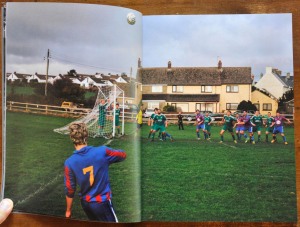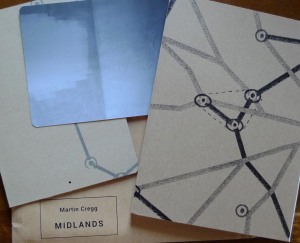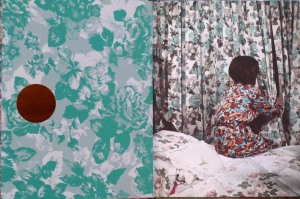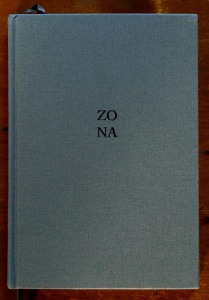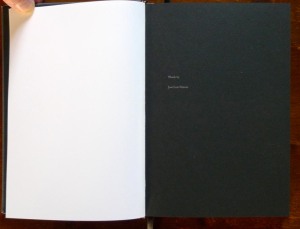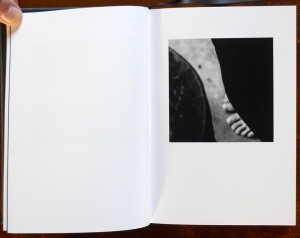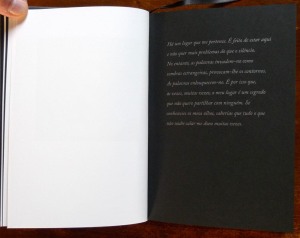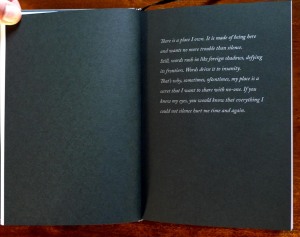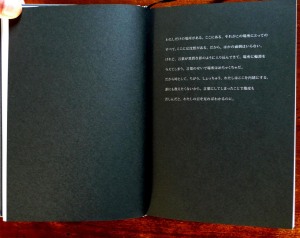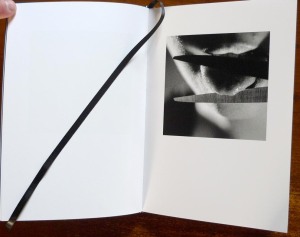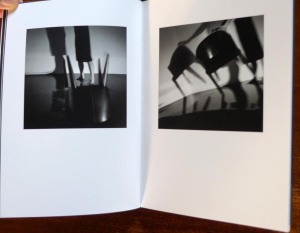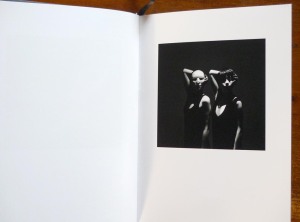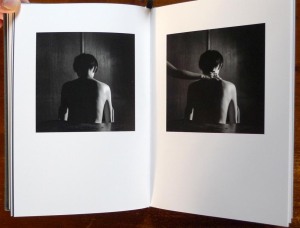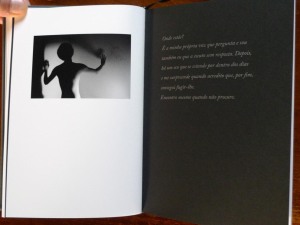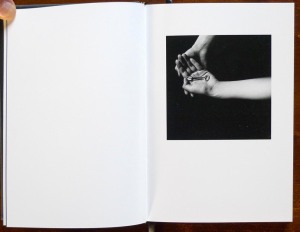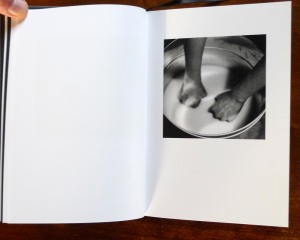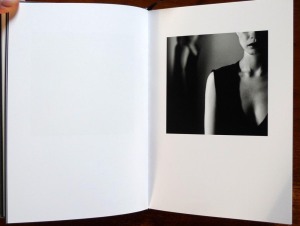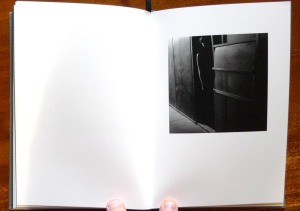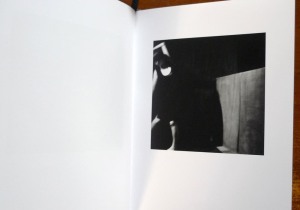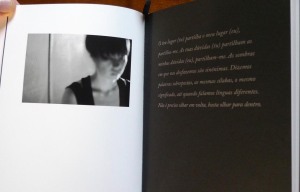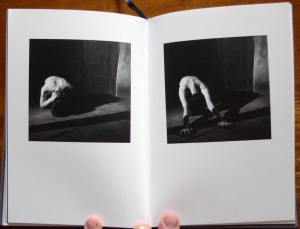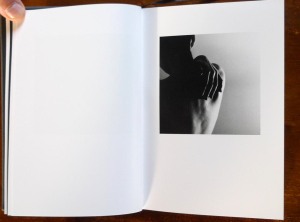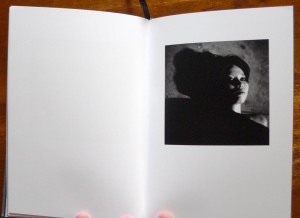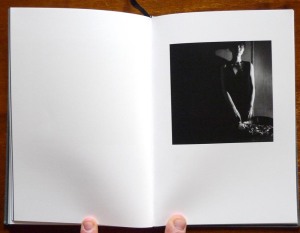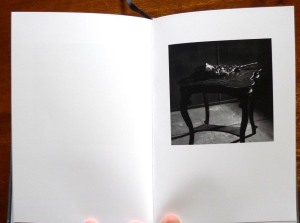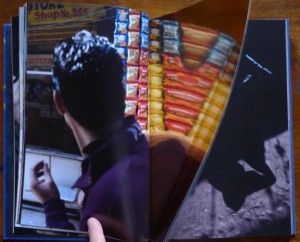The forgottens, another 2015 list !
Posted: December 29, 2015 Filed under: Photobooks, Photography 7 CommentsThe year is ending and many lists of best books have already been published. Thanks to Olga Yatskevitch, Marc Feustel and Laurence Vecten for their compilations. Books listed are no surprises, they’re good and deserved to be enlighten. My little contribution will not be to list best books but just to point out 12 books that really caught my attention this year and which, surprisingly, have not been mentioned anywhere so far ! Here they are in no particular order :
Hidden blood (red edition), Nozomi Iijima. She keeps on investigating her parents farm in a long term project. I am an early fan of Nozomi and in my opinion, this book is the most beautiful produced so far ! The book was produced during her exhibition at Reminders Photography Stronghold in January 2015. Self Published.
Under the skin of reality, Mario Giacomelli. Probably the most beautiful book dedicated to Giacomelli’s abstraction work which is not so well known. And I just don’t understand why this book has not be mentioned before this year ! Published by Schilt Publishing.
An unconditional love, Alex Ingram. In England, football is a religion and in this book, Alex just found the perfect distance to make us understand that. From children playgrounds to supporters, after some years in amateurish teams. A very good social documentary about English and football ! Self Published.
Eight stories (box set), Daniel Meadows. Daniel Meadows was a fellow photographer to Martin Parr at their debut in social photography and Daniel’s work is really strong and powerful. This is also the occasion of mentioning one of the most interesting publisher in England who during the last few years worked to highlight English photography in an affordable collection of zines. Published by Craig Atkinson for Café Royal Books.
Midlands, Martin Cregg. Does anyone really know where the Midlands are located in Ireland ? Well… No ! However this place was subject to a large funding campaign to help develop the area. Years later, after the crisis passed, what remains is emptiness and vacuity. A beautiful book about… well, almost nothing ! Self Published.
Code Unknown, Satoshi Fujiwara. Close up portraits which become abstractions. We’re so close that it becomes impossible to recognize the persons. To compare with faces by Bruce Gilden, without the irony and moquerie, thus far better. Published by Amana/IMA photobooks.
The day « she » was planted in the garden, Yahya Dehghanpour. Minutes by minutes, the funeral of famous poetess Forough Farrokhzad. Back in Iran during the sixties, the photographer follows the procession and we meet the whole intellectual Iranian society. Published by Manoosh Publication.
Mountains of wastes, Olivier Cornil. A great discovery found at Tipi Bookshop. Olivier explores an old rubber storage, alternating from grass and trees fighting with artificial hills of wastes. Hand produced with a fantastic design, it comes with a signed print ! Self Published.
Härkälä, Iikka Tolonen. If you like kaurismäki ambiances, you’ll love the book. From 1993 to 2013, the photographer returns to photograph a small community of heavy drinkers which is the main purpose in the life of those people ! Iikka Tolonen won the Nordic Dummy Award in 2014 and the book has been published by Kehrer Verlag.
Metropole, Lewis Bush. More or less a century after Fritz Lang, Lewis questions the representation of a metropole. How can we tell the frenzy, the density, the concentration ? In 15 double page photos we find an answer, walking slowly through the city till our own dissolution. Self Published.
L’intérieur de la nuit, George Shiras. Another book which remained completely out of the radars, maybe because it was a catalogue of an exhibition at Le Musée de la Chasse et de la Nature in Paris which is not considered to be included in the official photography tour. The rediscovery of a fantastic photographer who, at the end of XIXth century, shot animal at night with a… camera. Beautifully printed and published by Xavier Barral.
Casita de Turrón, Roberto Tondopó. The fairy tale of youth and puberty evocated during the teenage years of Andrea and Angel, Roberto’s nephews. A incredibly colorful story which undulates between naiveté and seriousness. Published by La Fábrica.
I wish you all a Happy New Year and I’ll be back next year with, hopefully, a few new discoveries !
Zona, by Nuno Moreira
Posted: December 20, 2015 Filed under: Photobooks, Photography | Tags: Dream, Lisboa, Moreira, Performance, Portugese photography, Psychoanalitic, Tokyo, Zona 3 CommentsZona is not the easiest book to understand it was given me to see recently. In a very neat formal aesthetics, the book is divided into “chapters” that are punctuated by texts written by José Luis Peixoto. The two overlap remarkably, black and white photos on the white pages and silver text on black pages. The words come chanting issues that emerge in photographs.
As I said above, the book is not an easy access and if we are not careful, we can easily slip on the aesthetics and ease through the book without even realizing the story that weaves itself. But if only one wants to take the time to enter it, this book becomes fascinating. We discover the imaginary of the unconscious, the relation of the self (the ego of the viewer) to himself and the relation of the self (ego again of the viewer) to another. Nuno Moreira plays with the ambiguity of images and text. Do we stand in the picture, or are we the person questioned in search of the other, or more precisely, in search of another presence.
The images have the precision of a dream, the details of a clinical precision that refer to surrealist experiments (tongue and scissors that can not fail to remind the eye of An Andalusian Dog by Buñuel). This book explores the unconscious and guides us without knowing what the outcome will be. Some images, stronger than others (but this is an individual choice), will remain printed in our mind. We do not really understand the narration, but snatches of memory keep coming to that memory makes emerge this impalpable unconscious. We discover ourselves, here to tell our dream, unable to decipher all the signs. Emerges finally what is hard to say but which, brick by brick, built our personality in the individual awareness, but also, and this is very present in this book, in its relation to the other. Nuno Moreira dare sketch here the assertion that we only exist by this relation to the other and thus the loss of this relation is our own loss, the loss of this individuality.
There are also symbolic emotional loads in these images : a key, a milky liquid, hands that touch, that soothe; all of them are deeply charged with psychoanalytic symbolism. The face of a woman, struggling to be revealed. Who is she, hidden back, blur, behind a mask or in the shadow of a door. She reveals herself at the end, only to better escape, leaving behind the withered branch that makes us doubt having seen her for real.
When finally we close the book and we go out of this dream, we are exhausted and excited at once. Flooded with sweat, we debate among afterimages, seeking a way out and a sense of it all. Finally, this book raises more questions than it answers. It has the charm and intimacy that make it a precious object to which one returns constantly in search of a perceived image, to which one reads backwards, like going back in time.
The photos were shot during a live performance organized in sequences directed by the photographer and, if the kinematic side remains present, the layout abstracts itself from reality and takes us by the hand to say: tell us your dream !
Hardcover book with a grey linen cover with title embossed in black. 15 x 21,5 cm, 108 pages with 30 black and white photographs. Limited edition of 300 copies.
More info : http://nmphotos.org/
If you can piss, by David O’Mara
Posted: December 13, 2015 Filed under: Photobooks, Photography | Tags: Construction, David O'Mara, Detritus, English photography, London, Workers Leave a commentFor once, I am not going to write about a published book. « If you can piss » is, so far, just a dummy. David O’Mara is a photographer living in London. He is known for his previous newsprint project called « Detritus » which focus on different wastes related to photography (I have already published a post about an issue). But well, making a living in photography is not the easiest thing to do, so, about ten years ago, when he arrived in London, he found some jobs for construction companies. And, as many photographers, he always carry a camera with him, shooting here and there, what appears to be of any interest.
If you can piss could be David’s biography, showing us ten years of his life, sharing his everyday. This is the exact project I could love. No drama, no hype subject, but a strong connection with real life through the team of workers, and a social concern background.
The dummy I have in my hands may be subject to a few changes but the main lines are already drawn and defined.
The book is very dense, all photographs are printed full page or double-page and a few breaths herein are black pages. Moreover the whole book is black and the site is « enlighten » by the progression of the work. The quality of this book is its proximity to the construction site. The photographer is not foreign, neither passing through nor visiting. He is part of the team, what we fully feel in the pictures.
I especially like this book because it deals with two elements that are important to me. The first deals with the essence of photography, writing by the light and this is revealed in the book. Among the sweat and dust, the light illuminates a gesture, touches material and reveals the beauty that lurks in this chaos that is difficult to understand for the uninitiated. There is a transfiguration which operates under the auspices of light and reveals the transmutation of chaos to the aesthetics and this refers to the second element very touching which is the amount of work the worker to build our society. The bodies suffer, they are cut, sliced, crossed by the space where they work. They are exhausted at the end of the day, and so we are, but there is a real added value with their job : from a pile of stones, sand and water, workers will make a wall. Their hard labor will produce a manufactured product. This is a knowledge that is not within the reach of all, and unfortunately forgot in our modern societies for the benefit of activities of appearance and illusion.
David’s photos make us the world endearing. We no longer look at a wall, an opening, or even a scaffold in the same manner. The book smells of sweat, dust and those smells remind us a certain amount of things, especially because the book is crossed by moments of grace : a look that you come across, a curtain fluttering in the wind, a light on a torn wallpaper, the trace of a hand on a lamp and this beautiful image of a hand, along a working jogging holding a smartphone showing the photo of a girl, with a mixed feeling of both pride and humility! Another point which is particularly successful is the alternance between individual and collective. In this kind of job, you can’t survive alone, you need the coherence of the group. You need to find your place by your own, but you also need the collectivism of the group. Work can’t be accomplished by a single man. Well, maybe this is something we call… society !
We never completely see David in the photos, apart on the cover, behind the hand painted dust jacket which lets us discover a self portrait, repeated, slightly differently on the back of the book. And from page to page we discover a hand, a foot which can be his… or ours ! The book ends with a touching dedication to a former co-worker we have already met in previous pages of the book.
I would really love to see this book comes true. It remains a few adjustments, but that would fairly be the job of a publisher.
Softcover 15 x 21 cm with hand « paint it black » dustjacket, 132 pages.
More info about David : http://www.davidomara.com/#/homeportfolio/4540332014
Follow David on twitter : https://twitter.com/Detritusphoto
Two books about Kolkata
Posted: December 5, 2015 Filed under: Photobooks, Photography | Tags: Bessard, Calcutta, Defaix, French photography, India, Kolkata, Peperoni, Photography 1 Comment2224 Kolkata by Pierre Defaix.
Rarely a photography book has been such a discovery. Kolkata, previously named Calcutta is a place deeply charged with imagination. I never set foot in India, and even, strangely enough, I have never been tempted by that country, perhaps still too much associated in my mind to a whole generation of hippies in search of spirituality.
On the other hand, my senses kick into gear instantly with the mere mention of India. The films of Satyajit Ray first, with his trilogy of Calcutta. The beautiful documentary film by Louis Malle then, realized in 1969. The sound of India, first brought to the West by Ravi Shankar then, reinterpreted by the second generation of immigrants in England as Nitin Sawhney. Odors, finally, that blend subtly spices that perfume the dishes including the spicy Vindaloo.
Kolkata by Pierre manages to summon all these imaginary within the pages of his book. Photographs full page matched facing one another. Saturated colors, abstract forms that become an object magnified by the grace of light. And then, water, meat, flowers, textiles, hands, feet and, recurring in the work, blood. Sometimes, we think we can take a break but the gilding of a page returns us to the image seen before. The only real break is actually a cry of rage: a quote from Pier Paolo Pasolini discovering this town and already hard-pressed by the beast lurking in him!
The frames are tight, images are closed, details succeed the details, and we lose ourselves in a sense of déjà vu, a kind of “I’ve already been there,” but no, it is only the city that continues, that constrains us in itself, that saturates us with feelings. We never really “see” the city, which is, here, presented in a fragmentary way, no spatial recognition, no large views, but a perpetual strong and effective evocation. The noise swells, smells invade us, the sounds become deafening, the city explodes in front of our eyes … We try to breathe, to take a break. The book even manages to make us feel the exhaustion of a walking day through the streets. The work of Pierre reaches a huge level of immersion that confines to a form of empathy. We are not only spectators crossing scenes but we become actors. We make our way, we stop on a detail, our mind wanders, looking for eyes which we fail to cross, a look that coyly escapes ours, all in an endogenous chaos that seems to be rebuilt every day from its own traces.
And finally, we have this question that remains: what does the number 2224 mean. We will perhaps need to go there to find the answer and experience full-scale sensations already perceived all along the pages. It is not so common that a photography work can get as much in tune with the different senses that hearing, touch and smell.
2224 Kolkata, hardcover book published in 2015 by Peperoni Books. 19 x 28,5 cm, 148 pages with 122 color photographs.
Kolkata by Tiane Doan Na Champassak
Finally, it would be unfair not to mention that other great book published last year about the same city of Kolkata by photographer Tiane Doan Na Champassak and published by Editions Bessard. We find the same energy, but the evocation is not the same. The comparison is interesting, it reveals the singularity of the photographic gaze. The city is not experienced in the same manner, it is therefore not represented in the same manner. It includes the sounds of chaos, but Tiane’s Kolkata is traversed by ghosts. Inaccurate pictures of characters that appear, and we do not know if they are real or merely a memory. The photographs make us switch to the violence in the city which is no longer soothed, but becomes the negative of the previous work. We came across drugs, poverty, prostitution, a trance seizes us. We are behind the scenes, with the people that moves the night. The light has changed, and so are the gestures ; the city is shared : the uses are not the same, and we came across the remains of the day …
Kolkata, hardcover book published by Editions Bessard in 2014. 22x30cm, 152 pages, 121 color and black and white photos. 500 copies numbered and signed.
More info on those books:
http://peperoni-books.de/2224_kolkata0.html
https://gabrielacendoya.wordpress.com/2015/11/25/25-de-noviembre-2015-2224-kolkata/
http://www.champassak.com/fr/accueil.html
http://www.editionsbessard.com/product/kolkata/







